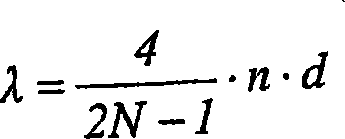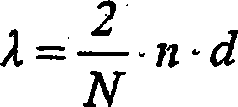Multilayer pigments based on glass flakes
A technology of glass flakes and pigments, applied in pigment preparation, inorganic pigment treatment, multi-color effect coatings, etc., can solve problems such as poor product quality
- Summary
- Abstract
- Description
- Claims
- Application Information
AI Technical Summary
Problems solved by technology
Method used
Image
Examples
Embodiment 1
[0109] 100 g of glass flakes (refractive index 1.5) having a maximum diameter of 40 μm (average 22 μm) and an average thickness of 0.5 μm were suspended in 2 1 of deionized water. Under strong stirring, the slurry was heated to 75 °C, and by adding SnCl within 0.5 h 4 an aqueous solution, equivalent to 3% SnO with respect to glass flakes 2 amount, and start coating. Once a pH of 2.0 was reached, 32% NaOH solution was simultaneously added to maintain the pH at this value.
[0110] Keep the slurry stirring for 15 min, then start adding TiCl 4 Aqueous solution (400gTiCl 4 / lH 2 O). The pH was kept constant at 2.0 with NaOH. Continue until the desired color is achieved. The slurry was kept stirring for an additional 15 min.
[0111] The pH was raised to 8.0 by slowly adding NaOH, and then started adding 1.35ml / min of 10% sodium silicate solution (from 74ml containing 8% Na and 27% SiO 2 A sodium silicate solution was prepared by diluting with 170 ml of deionized water). Th...
Embodiment 2
[0113] Embodiment 2 (comparative embodiment)
[0114] This embodiment is carried out in the same manner as Embodiment 1. Instead of glass flakes, mica with the same particle size distribution is used.
[0115] The effect of the drawdown of the final pigment is shiny and color positive, but it does not have the distinctive clarity, especially the transparency shown in shallow angles by glass flake based multilayer pigments.
Embodiment 3
[0117] 100 g of glass flakes (refractive index 1.5) having a maximum diameter of 40 μm (average 22 μm) and an average thickness of 0.8 μm were suspended in 2 1 of deionized water. The suspension was heated to 75°C, adjusted to pH 1.8 with dilute hydrochloric acid, first by adding 3.3ml / min of SnCl 4 Solution (from 2.2g SnCl 4 and 7.5ml concentrated hydrochloric acid in 100ml deionized water), while SnO 2 coated. The pH was kept constant using 32% sodium hydroxide solution.
[0118] Stir continuously for 15min, then under the same pH / temperature conditions, add 1.5ml / min of TiCl 4 Solution (400g TiCl 4 / l) and use 32% sodium hydroxide solution to keep the pH constant 2 coated. Coating was discontinued after the secondary green endpoint was reached, stirring was continued for 15 minutes, the pH was adjusted to 8.0 with dilute sodium hydroxide solution (over the course of about 15 minutes), and stirring was continued for an additional 10 minutes.
[0119] Then, by adding 3...
PUM
| Property | Measurement | Unit |
|---|---|---|
| thickness | aaaaa | aaaaa |
| thickness | aaaaa | aaaaa |
| particle size | aaaaa | aaaaa |
Abstract
Description
Claims
Application Information
 Login to View More
Login to View More - R&D
- Intellectual Property
- Life Sciences
- Materials
- Tech Scout
- Unparalleled Data Quality
- Higher Quality Content
- 60% Fewer Hallucinations
Browse by: Latest US Patents, China's latest patents, Technical Efficacy Thesaurus, Application Domain, Technology Topic, Popular Technical Reports.
© 2025 PatSnap. All rights reserved.Legal|Privacy policy|Modern Slavery Act Transparency Statement|Sitemap|About US| Contact US: help@patsnap.com


